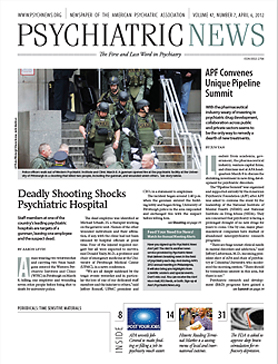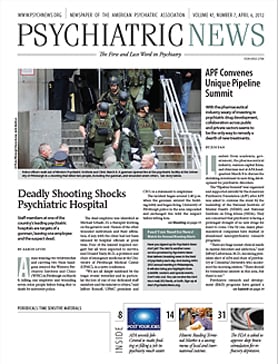A man wearing two wristwatches and carrying two 9mm handguns entered the Western Psychiatric Institute and Clinic (WPIC) in Pittsburgh on March 8, killing one employee and wounding seven other people before being shot to death by university police.
The dead employee was identified as Michael Schaab, 25, a therapist working on the geriatric unit. Names of the other wounded individuals and their affiliation, if any, with the clinic had not been released by hospital officials at press time. Four of the injured required surgery but all were expected to survive, said Donald Yealy, M.D., a professor and chair of emergency medicine at the University of Pittsburgh Medical Center (UPMC), in a news conference.
“We are all deeply saddened by the tragic events yesterday and in particular the loss of one of our dedicated staff members and the injuries to others,” said Jeffrey Romoff, UPMC president and CEO, in a statement to employees.
The incident began around 1:40 p.m. when the gunman entered the building lobby and began firing. University of Pittsburgh police in the area responded and exchanged fire with the suspect before killing him.
UPMC Police Chief Tim Delaney credited his department’s community emergency response training, developed in the wake of the 2007 Virginia Tech shooting, for the prompt action by his officers.
After some delay, the gunman was identified as John Shick, but as of press time, his motives were still unknown.
He was a 2004 graduate of Carleton College in Minnesota with a degree in chemistry and was banned from the Duquesne University graduate program in biology after harassing female students last fall, according to the Pittsburgh Post-Gazette.
Other news reports said that Shick had a violent encounter with police at the Portland, Ore., airport in 2009 that resulted in several assault charges and a commitment hearing there. He was ordered into psychiatric treatment for 180 days, but how long he remained in treatment has not been revealed.
A UPMC spokeswoman would not disclose whether Shick had ever been a patient at the clinic, citing privacy laws. She also would not confirm news reports that a “doctor or psychiatrist” was among the injured. APA members who were asked for comment on the event referred Psychiatric News to UPMC’s media relations office, which declined to permit interviews.
“Security will be reviewed thoroughly” in light of the shooting, said WPIC President Claudia Roth, Ph.D., at a news conference. The 310-bed hospital has 2,000 clinical staff members, she said.
The facility now uses a metal detector at the entrance to its emergency department but not at the general entrance, where the incident began.
Some psychiatric facilities use hand-held, metal-detecting wands to check patients and visitors for weapons or other contraband, said Scott Zeller, M.D., chief of psychiatric emergency services at the Alameda County Medical Center in Oakland, Calif., and president of the American Academy for Emergency Psychiatry.
“At our dedicated psychiatric campus we wand all patients on arrival to the hospital and also wand all visitors prior to entry into patient-care areas,” said Zeller in an interview.
However, it is not clear if such precautions would have stopped Shick, since he started shooting almost immediately after he entered the building.
Shortly after the event, WPIC began providing support for staff, patients, and families in work areas and the lobby, with other teams circulating throughout the building, said Roth in a statement.
About 300 staff members took part in group support sessions in the first five days. A drop-in support center for families and visitors of WPIC patients was set up and was staffed by members of the National Alliance on Mental Illness.



